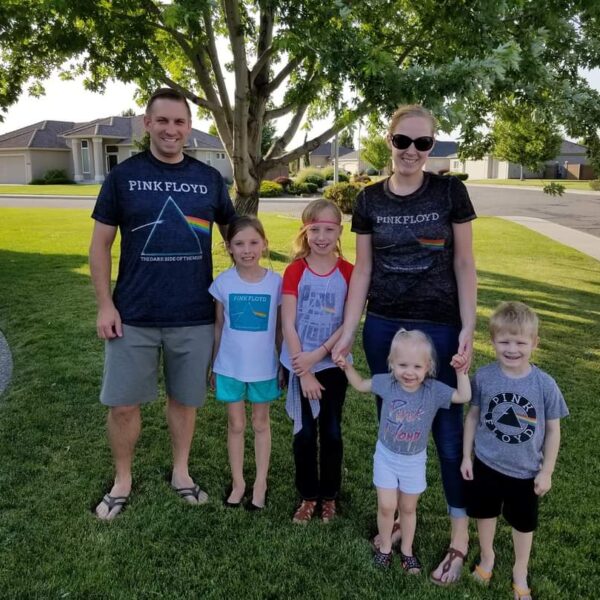PNNL Guide to Retirement 2025
Transcript
00:00:00
Hi and welcome to Cornerstone clips. My name is Tyler Scott, one of the wealth advisors and certified financial planners here at Cornerstone Well strategies. Today we’re gonna chat a little bit about panel and retirement benefits. So we’re gonna stay a little bit high level. Of course, some of these these items conceptually can change depending on your goals, 10 year tax situation, so.
00:00:21
But with that, let’s go ahead and dive in.
00:00:25
Today we’re going to cover a little bit about your pensions, chat about Social Security and strategies, 401K limits on how much you can of course put into the each each of those sources little bit about medical income planning and touch on consulting we we get that question quite a bit.
00:00:43
Pensions. We’re gonna cover when to take.
00:00:45
It.
00:00:45
Survivorship options which are going to elect once you retire and we’re just gonna chat about the inflations or the effects of inflation on that.
00:00:56
When to take it? Usually it’s going to be at retirement. Of course. It’s all about the tenure and how long you’ve been at the lab. Some of you, if you’ve only been there for a couple of years, might want to really defer it. What you’re gonna wanna do is they actually can run projections for you to show maybe a different reduction, a lot of times pensions.
00:01:16
Are fully funded or not discounted at age 65? Again, it all has to do with your 10.
00:01:20
Here, but they can run those projections to actually see when you might not take such a big hit or reduction. But for purposes of today, a lot of times, if you have a decent tenure at the lab, you’re taking it at retirement. One reason is because you have to actually file and be receiving your benefits in order to get retiree benefits.
00:01:41
Right. So make sure that we’re you double check on that in retirement because the lab has some good healthcare and and retiree options there, so.
00:01:49
Survivorship this is something you’re going to elect when you start receiving or when you retire and start receiving that benefit.
00:01:57
You can file just for yourself. It’s going to be your highest benefit, so that’s your single option, and then you have different survivorship options, which 100% means if you’re married or or in covering a spouse, they will receive the same benefit you are receiving. It will be a reduced benefit, however, that is our.
00:02:17
Most commonly we see this choice being made because in order to make up ground, if that payment were to go away and not cover your spouse, trying to ensure that kind of a payment can be rather.
00:02:28
Expensive.
00:02:30
You’ll have other options to cover at different levels, so your survivorship could get 75% of the benefit. You’re receiving 66 2/3 or 50% and so on. You’re gonna see something called period certain and what that is is if you took a payment and you covered for two lifetimes, that 100% joint survivor, you see something that says 10 years.
00:02:50
Possibly 20 years period. Certain what that means. If something were to happen to the two people being covered on the 100% joint and survivorship. If you picked the 10 year period, certain you would have beneficiaries listed, they would receive that benefit for that 10 year period.
00:03:05
Good.
00:03:07
It’s important to note there there’s no inflation adjustments, so once you retire and you start receiving that payment, it’s going to remain constant.
00:03:15
So chatting a little bit about inflation, this is important when you’re thinking about your overall goals and your retirement plan, and that payment being constant. So let’s say that that constant payments is $100,000 when you start receiving it with this slide is showing you is 10 years the purchasing.
00:03:30
Hour of that original $100,000, based on a 3% inflation overtime, you can see that the purchasing power in 10 years is 76,000 and $23. So again important to have other inflation fighting factors in your overall goals and plan because your pension will remain constant.
00:03:50
Let’s talk about Social Security. When to file and a little bit about working in retirement. We get this question quite often.
00:04:00
So full retirement age here. Soon you can see 1960 or later. It’s going to be age 67. So again here soon a lot of people retirement your full retirement age or your primary insurance amount is going to be age 67. You’re going to hear this number referred to a lot and it’s going to be referred on your statement and and highlighting what you’re going to your full retirement benefit.
00:04:21
So here’s a scale, and let’s just say, for example, if you were born in 1956, your full retirement amount from the Social Security Administration would be at your age 66 and four months.
00:04:35
So reduction factors. So the earliest you can file for Social Security is at age 62, the latest you can file is at age 70. So this is showing you prior to your full retirement age. So let’s say you’re full retirement is age 671960 and later. So the bottom category there you would take a 30% reduction in your benefit.
00:04:56
If you were to file.
00:04:57
Really.
00:04:58
Now, there’s reasons why you would or would not, and it’s going to pertain to what over strategy overall strategy that you choose.
00:05:06
Really just chatting about that for a second. If you were to file at age 62, you’re going to receive benefits even though you get a 30% reduction for again, we’re going to use the full retirement age of age 67 as an example. You will receive that benefit for five years. We’ll really want us to think if you are receiving that benefit for five years.
00:05:26
Well, if you choose to defer till your full retirement age, that increased benefit that you are receiving needs to make up ground for that five years you would receive payments if you do the math and even if you defer to age 70, you you’re going to see that it’s in between about age 7879 to 82 depending on.
00:05:46
When and and how long you defer? So really it begs the question and there’s other factors we’ll talk about work and retirement, but do you want more prior to age 80 or after age 80? So it’s something to consider there.
00:06:01
So benefit increase factors after your full retirement age. So again, let’s focus on that 1943 or later at that 8%. So really if you’re just trying to bring everything out of that Social Security system and you want to defer from age 67 to age 70, you’ll have an 8% increase. Again, your break even is going to be into your 80s. However, you know some.
00:06:22
You might want to consider deferring if you have longevity, or really, you’re just trying.
00:06:27
Into yet every dollar you can out of the Social Security system, but there’s a lot of factors there. Ultimately, you might have to take monies out of your portfolio and it in order to defer so that same break, even concept of into your 80s really applies here as well. So something to.
00:06:42
Consider on that.
00:06:46
Working in retirement so we get this question quite often. People are retiring earlier and earlier these days. I would, I would say probably prior to age 65 or your full retirement age. So why this is a key key factor is.
00:07:00
Prior to your full retirement age, if you go back to work.
00:07:05
And you and you are receiving Social Security. So from age 62 up to the year of your full retirement age, it will reduce for every $2.00 you earn, it’s gonna reduce your benefit for a dollar. The new 2025 limit is 23,400. So you can make up to that. And above that, if you start making so if you get a contract.
00:07:24
Up for $100,000. It will reduce your.
00:07:27
Benefit to 0.
00:07:28
So just be careful if you file for your benefit and going back to work the year you turn full retirement age. That calculation is is above 62,160 and then anything above that it’s for every $3 you make. It reduces for a dollar.
00:07:46
There is a special rule for the first year in retirement. I’ll just use an example. Let’s say that you retire at age 63 and you retire in the month of July.
00:07:55
So then the Social Security Administration is going to look at basically August through December for how much you’ve made per month, so that that first year they’re gonna look at everything monthly. So it’s OK that you made substantially more from the first of the year, January through July. So there’s an exemption there. So don’t worry about if you’re if you’re retiring in the mid year and you wanna file for it.
00:08:17
All the earnings that you had prior are exempt from this rule.
00:08:23
401K, we’re going to talk about plan highlights sources. That means pre tax post tax Roth in different milestones. We’re gonna go through an age progression actually kind of give you some key considerations there.
00:08:39
So Battelle’s plan highlights custodian is at Vanguard.
00:08:44
The sources so where you little buckets, you can put your money are either pre tax so you get the deduction. Now you pay the tax now and go into a Roth. Something called post 86. We’ll chat a little bit about that, but that’s you don’t have to Max out your plan to put this in and and it could be maybe considered as that mega back to Roth. We’ll chat about that here your match.
00:09:04
Is, uh, 50% up to the 70% or 7%?
00:09:10
Also, something that’s unique to 401K’s and and it does pertain to Battelle’s, is the rule of 55, meaning you retire the year you turn 55 or after you actually could take your take your money, penalty free, right. So we’ll chat about that more.
00:09:28
So pre tax contributions contributions are made pre tax so earnings growth is then tax deferred. So you get that deduction. Now it grows tax deferred and at retirement distributions are taxed as ordinary income as you take that out on retirement it’s gonna be penalty free either at that rule of 55 I talked about.
00:09:49
Or 59 1/2.
00:09:51
So you’re gonna have. This is also gonna be subject to required minimum distributions. You’ll be either at your age, 73 or 75, depending on your age on this call.
00:10:04
Roth contributions, so contributions are made.
00:10:07
After tax, so you pay the tax now earnings are going to grow and be tax free as long as you meet the A5 year rule and.
00:10:16
And again, that rule of 55 and 5959 1/2 applies. So this can really create a valuable tax resource. And in of income and flexibility in retirement, really, it’s having a lot of different buckets. So you can have control of your tax picture going forward.
00:10:34
So post 86 contributions, you know you could do, you can do your match. You you really don’t have to Max out your plan. And we’re gonna talk about those limits here in a minute. But what post 86 contributions are is they’re they’re made after tax.
00:10:48
Their earnings grow tax deferred but are not tax free, so.
00:10:54
The basis can always be taken out, so your contributions, if over five years I put $5000 in it $25,000, you can call up vanguard and take that basis penalty free. So those are again after tax contributions. The growth though does not work that way. Now a lot of a lot of clients ask us about a mega backdoor Roth. So this is how you can do that.
00:11:17
Within the PNL batel plan is you can maximize the plan limits, which we’ll chat about here in in a minute and put money in what’s called the post 86.
00:11:27
What you then do is you roll the money out and let’s just say you do it once a year and you put $20,000 in a year. What you put in. So the basis. So if I put $20,000 in.
00:11:39
That can go to a Roth IRA. The growth cannot, though. The growth goes to a the traditional source because it again, it’s tax deferred. It did not grow tax free. So this is how the backdoor Roth IRA, the mega backdoor Roth IRA rule. And this is this is.
00:11:56
Conceptually, how you do that?
00:12:00
Here’s the contribution limits to the PNL 401K. So here’s the 2025 limits, so 401K if you’re under 50 is 23,500 catch up contribution. So now we’re entering 2025 is going to be a little bit more confusing traditionally it’s always been if you’re above 50 it’s it’s a constant limit so.
00:12:19
For this year, it’s going to be 7500 now based on Secure Act 2.0 in between the age of 60 and 63, it’s going to increase. So for those years you can actually do a catch up contribution of 11,250.
00:12:36
Then it reverts back at age.
00:12:37
64 and it’s going to be that limit of 7500.
00:12:41
Again, your match is 50% of the 1st 7%. The planned maximum is is that $70,000 plus your catch up there. So again that’s that mega backdoor Roth. If you took that deferral and let’s just say that you’re under age 50 for simplicity on this is 23,500. I mean you could put another you know.
00:13:01
Thirty $40,000 into a plan and actually do that. Make a back to Roth up to that $70,000 limit.
00:13:09
So some considerations. You know what? What? What should you do? Pre tax Roth that post 86. You know conceptually if you if you were to talk to a financial planner, if you’re in a very high tax bracket now and you’re in a lower tax bracket later well might be better to take that tax benefit. Now that deduction that pre tax.
00:13:29
And take it out when you’re in a lower tax bracket. Now we are in a very historically low marginal tax bracket. So that’s just something to consider. So what our tax brackets going to be in the future?
00:13:40
Your goals and withdrawal needs so really again if you want to take out large lump sums, it’s really nice to have a diversification across your sources. So Roth, let’s say you just have a one time expense when you’re aged 74 and you want to take $120,000 out. Well, taking it all from your pretax is gonna.
00:14:00
Add to your overall income, and there’s a lot of different considerations there.
00:14:04
Right. Having that raw bucket or an after tax bucket is really gives you a lot of control over your your income plan, Secure Act 2.0. The reason why we mentioned this here is that’s another consideration of maybe doing the Roth. If you really have a goal of let’s just say leaving money monies to heirs.
00:14:23
Now as they inherit those IRA’s, they have to take that bucket out within that 10 year period.
00:14:29
So if it’s a Roth source that can be very, very beneficial, because it’s not going to affect your heirs overall tax picture. So another consideration if you’re really wanting to pass assets along of considering that Roth also with that required minimum distributions you know we see this a lot as Roth hasn’t been as popular up to probably 10-15 years.
00:14:49
So or so, but they just put all they want. That tax benefit now, a lot of people want that now. So they take that tax benefit and when they reach retirement and get to required minimum distribution age really handcuffs to take in a certain amount out at age 73 which is our current required minimum distribution age just over 4%. You have to take from your assets. So again you kind of lose control of your overall tax picture and it could.
00:15:12
Push you into higher marginal brackets Medicare brackets, so just something to think about. Just diversification across your income sources is really key here.
00:15:23
So let’s chat about medical.
00:15:27
So Healthcare is is something we really need to think about and consider right now, traditionally it inflates more than overall average inflation. So they continue to rise, lifespans are getting longer and longer and and really Medicare is is it enough. So we’re going to talk about Medicare, the different parts of it.
00:15:48
And how you can maybe umbrella coverage that for future expenses?
00:15:54
So healthcare coverage you’re gonna have, let’s chat. This is specific to Medicare, so parts ABC&D. So part A is is basically your your hospital insurance and we’ll look at how much it costs here in a second. Part B is your medical insurance. So once you reach age 65, this is gonna be your primary coverage.
00:16:16
Part C is an advantage plan. Part D is your prescription prescription coverage, but we’re going to chat a little bit more about part C here and how that pertains to your possible outcome of your retirement there at the lab.
00:16:29
All right. So let’s talk about how much each of those costs. So Medicare premiums in 2025 part A usually free Part B and this is 1 to focus on quite a bit. This is based on your modified adjusted gross income could be anywhere from $185 per person to 628 or just over there or 628 and $0.90 per.
00:16:49
Month per person in in 2025, part C varies by plan. That’s on the Medicare side of things. Your coverage might, might or could be through P&L and we’ll talk about that here in a second in.
00:17:00
Part D also varies as well.
00:17:05
So Medicare dates, if you are taking Social Security. So let’s say you decided to file at age 626364, you’re auto enrolled if you’re taking. So if you have already been receiving Social Security benefits, so you’re eligible if you are age 65 to file 3 months prior the month.
00:17:25
Of or three months after you turn age 65. So that’s really important, especially if you are retired because then Medicare becomes your primary coverage and then your retiree benefits become that secondary coverage right there so.
00:17:41
It’s it’s important to look at now if you are working.
00:17:44
You know your part. A. It’s free. It’s fine. You can enroll into that Part B. You’re going to want to defer. If you’re still actively working and more than likely at the lab. And you could double check with them because their coverage would be primary and Medicare would be secondary. What that basically means is you can keep deferring your Part B coverage until you actually retire.
00:18:05
And then Medicare becomes primary. So again, if you’re working until you’re age 6768, that Medicare 65 isn’t shouldn’t have as quite of a heightened importance, but it’s something to maybe just ask a question about.
00:18:20
Double check.
00:18:23
So via benefits and this is kind of what I’ve been alluding to. So depending on your 10 year at the lab, you, you could have retiree benefits. And one of those benefits is via benefits. So they are, they have and we’ve heard a great resource for clients and very helpful. This is once you’re on that Medicare side of things, so.
00:18:43
You could and might have retiree coverage.
00:18:46
Something to talk to your HR about once you turn age 65. If you have that retiree coverage, buy a benefits will help you with that supplemental plan, right? So that is the C part, right? But you’ll have benefits through PNL and you can actually get a health reimbursement health or sorry, the Medicare reimbursement from via benefits.
00:19:06
So they can actually supplement your Medicare. So again, something that you make sure that I mentioned earlier, if you’re taking your pension, you qualify for those retirement benefits is contacting that via benefits, if you’re Medicare age, so you can take advantage of that great resource and and supplementing your Medicare plan.
00:19:26
Income planning. We’ll. We’ll show you a nice little timeline here, strategies and retirement talk a little bit about risk.
00:19:34
Retirement timeline, so age 50. This is when you can start making those catch up contributions. We talked about those limits earlier age 55. So this is key. If you’re retiring early, let’s just say at age 56 rule of 55 applies to 401K specifically.
00:19:51
And other types of plans like that, but not in an IRA. So it’s really key and important to make sure that you keep assets in a flexible bucket. So you don’t pay a penalty prior to 59 1/2. If you were in an IRA again for one case, that rule of 5559 1/2, you’re really going to not have to worry about any of those.
00:20:11
Not anymore. I arrays brought by arrays. You know there are penalty free at that time.
00:20:16
Additional catch up contributions as I showed you from that age 6063, age 62 is the minimum age you can start receiving your Social Security benefits 65 starting that Medicare could be age in between 66 and 67. Full Social Security benefits and current law age 73 is where required distributions.
00:20:37
More here in about 7-8 years that will move to.
00:20:41
Age 75.
00:20:44
So traditional income sources and and we chat a little bit about you know diversification across that. So when you’re talking about income planning or entering retirement, you’re starting to stack those different sources. So Social Security should be there, pension stacks on top of that. And then your personal assets. So we’ll dive into more of that.
00:21:04
So strategies in retirement to chat about is, you know, ultimately it’s really understanding what your overall need is. A lot of our clients ultimately have all their needs met by Social Security and have it a nice pension, but you might need to supplement a little bit more from your income from one of those buckets. We’re talking about the pre tax.
00:21:24
Or the Roth, so it’s just really understanding and keeping within allowable withdrawal rates a lot of times. Refer we refer to 4% out of your assets, right as financial planners, so.
00:21:38
Stocks and growth potential, maintaining that sensible allocation and fighting inflation again, as mentioned, if you really have a good understanding of where your essential expenses at and there ultimately all those needs are met by Social Security and pensions, it’s not uncommon for us to see clients that are still very growth oriented, 80% stock.
00:21:58
100.
00:21:58
Percent stock, right, because they don’t necessarily need to withdraw from your assets. If you’re thinking about how your strategy should be maintained, it’s a lot of time has to do with your withdrawal needs and your time horizon. So if your withdrawal needs are zero and your time horizon and you’re still in your 60s, so you got a long time to go in retirement, right? So that does your goals need to be talking to your assets?
00:22:19
So you need to periodically review those goals and rebalance that portfolio. Other strategies could be Roth conversions. You know you have a really good opportunity window depending on how much your pension and Social Security is.
00:22:32
And well, let’s just say that you retire at age, you know, 67 full retirement age. You take your Social Security, you have your pension prior to required distribution age. If you chose that pre tax source and you have a big bucket, maybe Roth conversions up to a certain marginal bracket or maybe up to a certain modified adjusted gross income bracket for.
00:22:53
Your Medicare premiums, right, it’s something you really need to look at as your overall tax.
00:22:56
Sure.
00:22:58
That could help with your required distribution management. Maybe maybe lowering those required distributions in the in the future charitable giving that’s mentioned there, you know at age 70 1/2 you could do qualified charitable distributions. And our current picture, our standard deduction is very high. So this could be.
00:23:17
A very good resource if you are charitably inclined to lower your adjusted gross income dollar for dollar. So charitable giving is is something there. Medicare, Irma brackets, and what we’re mentioning.
00:23:28
There is again if you go, that’s all based on your modified adjusted gross income and there’s several layers into that. And I mentioned those premiums earlier.
00:23:39
What there is is a 2 year look back, so if you’re filing 2025 taxes, that’s going to affect your 2027 premiums.
00:23:48
If you go a dollar over and then they work similar to marginal brackets, you’ll have to look up those Irma brackets. You go dollar over your Medicare and premiums could increase by a couple thousand a year for for well 1000 per person a couple of 1000 per year. So just something to take a take an account there.
00:24:05
And think about.
00:24:08
So let’s talk a little bit about growth right here. It’s illustrating inflation, an 80% stock portfolio, a 60% stock portfolio and a 25% stock portfolio. So really this is basically showing you over time more risk is going to perform better than less.
00:24:27
Yes, right. And and again, commonly we see retirees from PNL a lot of times your essential expenses are met by your pension and Social Security. So really taking that appropriate risk that you’re comfortable with. And if you don’t have any withdrawal needs being a little bit more aggressive definitely could pay off fighting that inflation and future healthcare costs.
00:24:50
So consulting how does that affect your benefits and business structure? Just kind of a generic slide here, but wanted to talk about that. There’s there’s a lot of different things to consider. So if you’re retiring at.
00:25:01
Age 62.
00:25:02
Again, if you go back to work and you make consulting income of 80 to $100,000 and you have already filed for Social Security, that will reduce your benefit.
00:25:11
All the way back down to zero, there is a one time exemption. If you do file and you find that dream consulting job that you can pay back your premiums and it’s just like you have never taken Social Security, that that’s a one time thing again something to consider business structure.
00:25:28
You know, ultimately we get the question a lot. Hey, do I act as a sole proprietor? Do I set up an LLC? Think that’s going to be situational specific and depending on the overall amount, let’s say you’re gonna make 10,020 thousand. Is it worth the headache of filing the LLC and figuring out should I do a sub S Corp C Corp, what have you?
00:25:49
Maybe, maybe not. Now, if you’re going to make 150,200 thousand for three to five years, there’s definitely some considerations there. Maybe setting, LLC, understanding, payroll tax. So just some things to consider there.
00:26:05
Well, that wraps up our presentation. I know I went over a lot of topics quickly, so please feel free to reach out to our team if you have any questions and want to chat more about your personal situation. We have a great team of advisors available to discuss your options at PNL. So thanks for tuning in to Cornerstone clips today and hope everybody has a a great day. Thanks.








